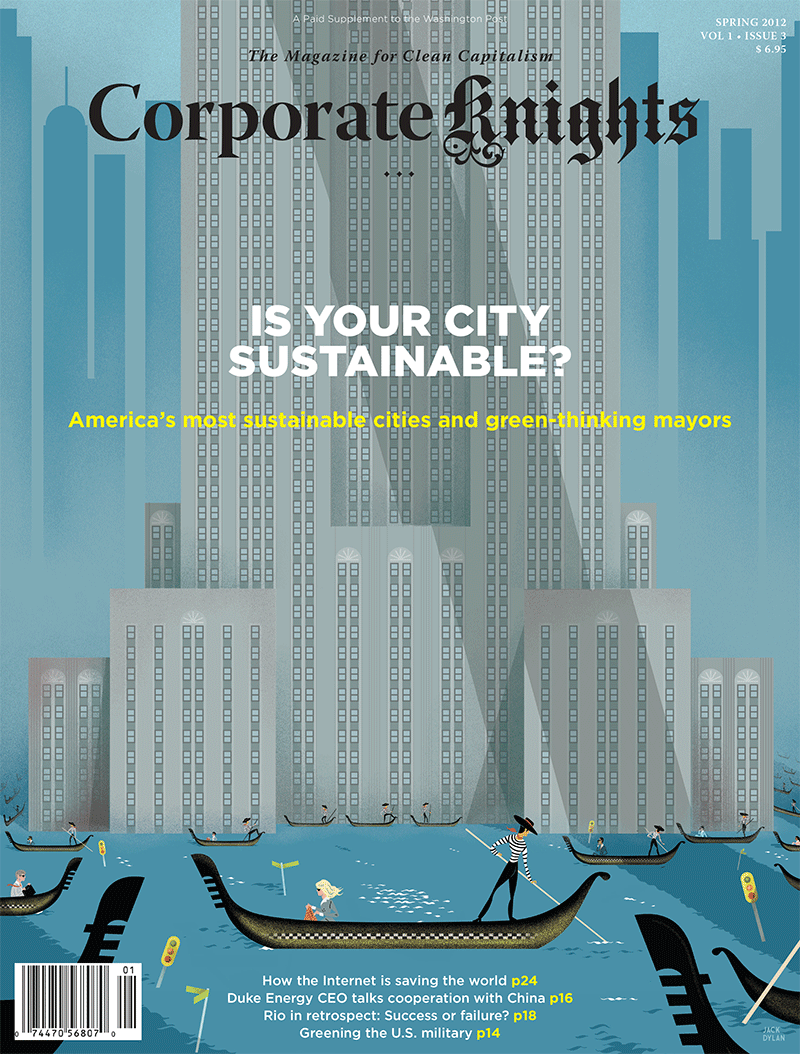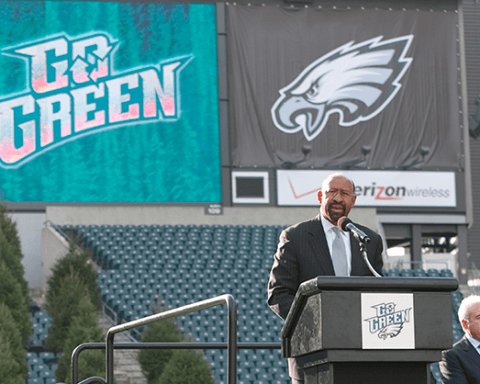In discussions about climate change and our deteriorating environment, it’s often said that cities – not international organizations, nations or states – are best positioned to put us on a more sustainable path. Indeed, American cities have already laid the groundwork for the pathway to a national green economy.
Cities are crucial to the challenges we face. Ecological and sustainable cities are places where local leaders, public officials and residents recognize the growing need to protect and improve the quality of the biophysical environment and are willing to act. Cities are increasingly looking for new ways of doing business that place city government squarely in the middle of proactive efforts to promote, guide and manage growth in order to carefully improve energy efficiency, the environment and the long-term quality of life for residents. In many cities, the idea that any development is good development is rapidly being replaced by the idea that development must respect and, when possible, benefit the environment.
It hasn’t been easy for them. Practically every city in the United States faces serious social and economic problems, including loss of population and associated loss of tax revenues, the loss of manufacturing jobs and industries, increasing demands to provide services for diverse groups of people, and meeting new demands for first responses in homeland security. Cities that want to build their own local green economies, even where they promise to save money over the long term, find that in the current economic environment they cannot free up the resources to make even the most modest investments in green infrastructure.
Still, many are stepping up. The 2012 Green Cities ranking shows that compared to 2011, several cities continue to make solid progress toward becoming more sustainable.
The annual ranking, first published in 2010, is based on the number of municipal policies and programs adopted and implemented by cities as they work toward saving energy, protecting and improving their biophysical environments, promoting green economic development, and enhancing their overall quality of life. Unlike other city-sustainability rankings, this ranking focuses on the effort cities are making rather than on their results, which could take years to achieve. In other words, this ranking is aspirational in nature. When cities adopt and implement new policies and programs that are designed to achieve greater sustainability, they are making an effort to take sustainability seriously.
Cities typically do not make huge programmatic changes from one year to the next, and this is especially true when their budgets are strained by declining revenue growth. Yet when we compare this year’s rankings to those of last year, some cities stand out as making impressive progress. A number of cities fell slightly, but only because other cities moved ahead of them. In terms of the actual numbers of programs, the vast majority of cities remained the same.
The cities that have exhibited the most change are those that fell in the middle of the 2011 rankings or below. Three Texas cities are featured among the seven that have improved the most. Fort Worth, Dallas and El Paso have all continued to make strides, with Fort Worth now having caught up to its neighbor, Dallas, in terms of the number of programs it has adopted. By implementing five new programs, including the creation of its impressive multi-agency Sustainability Task Force, and developing programs to make city operations more sustainable, Fort Worth is now ranked 17th, moving up from its previous position of 33. With ambitious new efforts on green building, energy efficiency, alternatively fueled city vehicle fleet, a bicycle ridership program, and rainwater harvesting and wastewater reuse, Fort Worth now seems to have caught up to other Texas cities in terms of how seriously it takes sustainability.
Charlotte, N.C., is also on the list of changers. Charlotte has made so much progress that it’s on the verge of joining some of the most impressive city sustainability efforts in the U.S. With new energy efficiency grant and training programs, the issuance of its most recent Environmental Review Manual 2010-2015, and the creation of a new “pedestrian overlay zoning district” to promote pedestrian-friendly building, design and development, Charlotte now has some 32 programs and policies promoting sustainability. With a new initiative to fulfil the next phase of its Centers, Corridors and Wedges Growth Framework zoning revisions, which is about to get under way and is not reflected in the 2012 rankings, Charlotte is poised to make even greater progress in the years to come.
Oklahoma City’s ranking fell to 50 from 48 even though the number of its sustainability-related programs remained the same at 18. Recent events there suggest that the city’s number of programs might decline as well. Oklahoma City has experienced some organized political “pushback” on its sustainability initiatives, and the city has elected not to renew its membership in one of the leading international organizations providing technical assistance, ICLEI – Local Governments for Sustainability. This may well affect the city’s climate mitigation and other efforts in the future.
Click here to go back to the ranking landing page.







